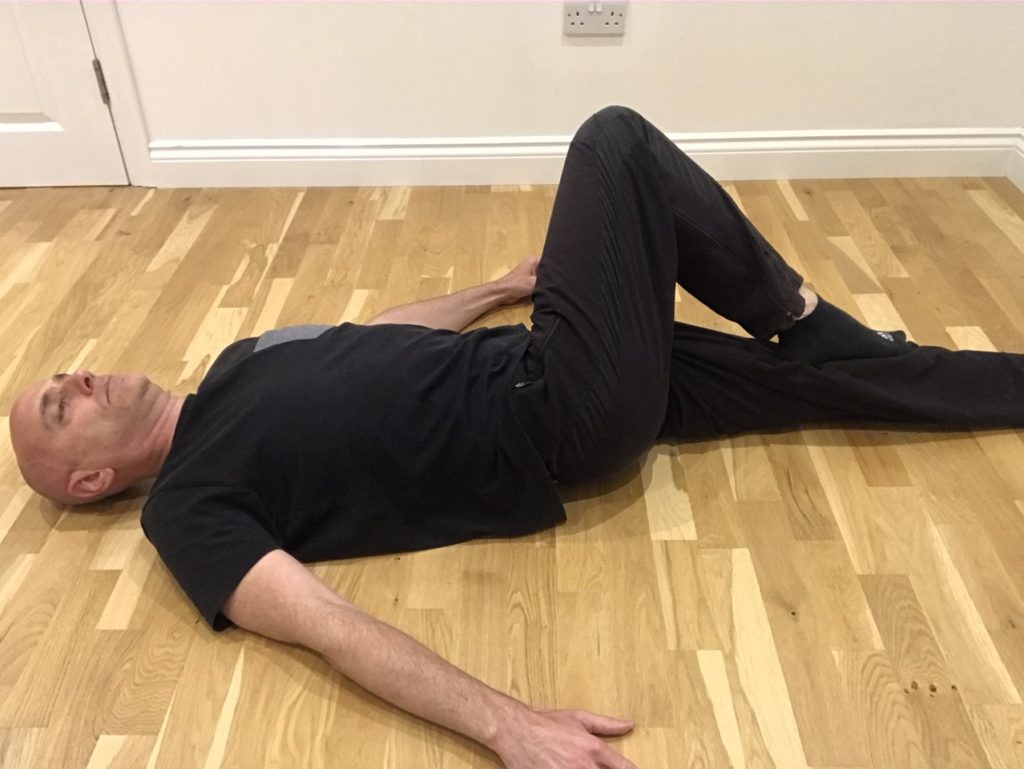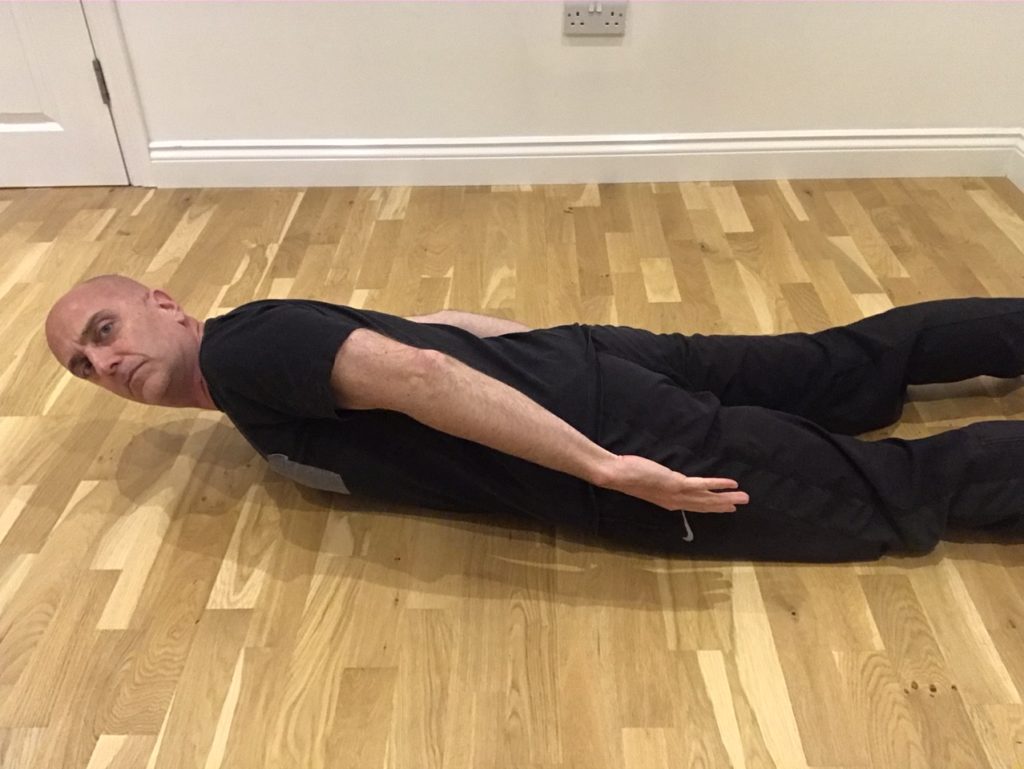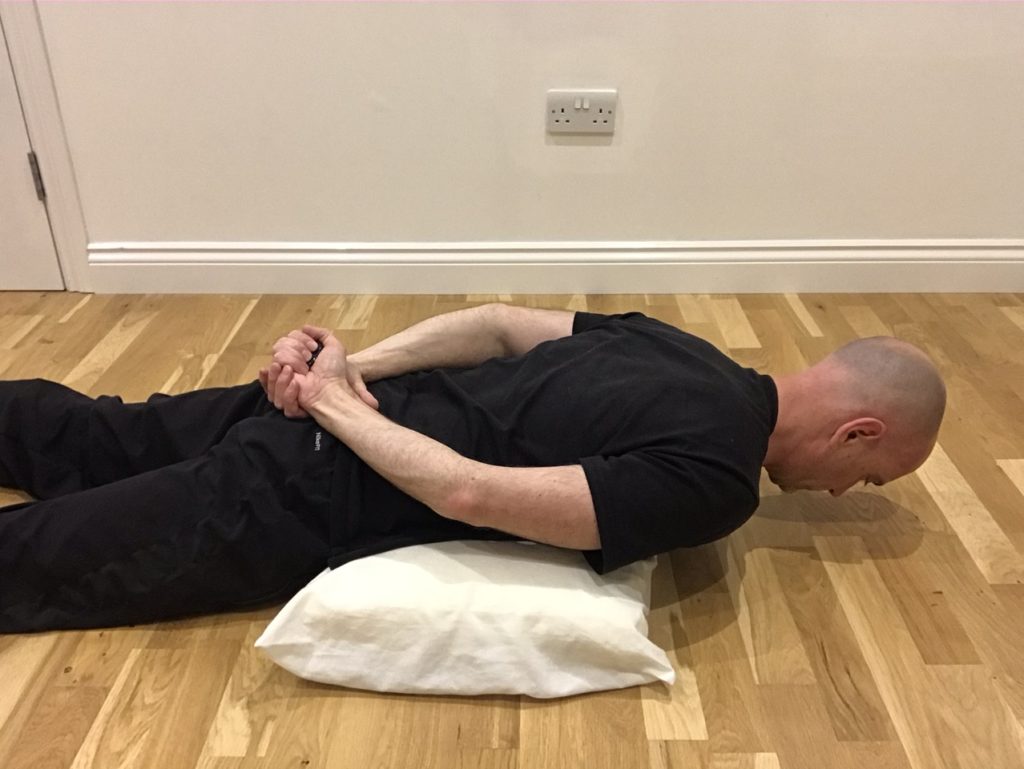In this post I’ll show you how to reduce back pain and tightness with 3 simple exercises you can do at home.

If you’ve suffered from back pain in the past, it’s not surprising that it may have returned during this testing period. The research shows a clear link between psychological stress and pain.
Not only can stress increase your sensitivity to pain, it also impacts other important variables such as sleep and food choices.
A lack of sleep both chronically over 3 weeks, and acutely over 24 hours, have been shown to increase sensitivity to pain.
Whilst increased dietary intake of sugar, starches, trans and saturated fatty acids promote inflammation.
Each can feed and amplify the negative impact of the other. For example, stress may cause you to sleep less, which can then increase your desire for high sugar foods to increase your energy levels.
Understanding these links will help you to begin to make adjustments.
Whilst you can’t do much about a pandemic, you can attempt to alter your response to it. As Shakespeare said, ‘there is nothing good or bad but thinking makes it so.’
Adopting this mindset is easier said than done of course. Having an awareness of what’s going on and how it’s affecting you is the first step however.
Right then, onwards.
Are you in danger?
I’m guessing the discomfort you’re feeling now isn’t related to a specific incident as such. And if it was, the forces involved were relatively low.
Think more emptying the dishwasher than attempting to lift it.
If that’s the case, there’s unlikely to be any tissue damage present and you’re probably safe to move.
If you’ve had back pain before, think back to how you recovered from it.
What we’re trying to do here is give your nervous system some credible evidence that you’re not in danger.
If you recovered from this situation previously, then there’s no reason to suspect you won’t again.
Note: there are back pain scenarios where you would be in danger, but these are around 1% of cases. I trust you wouldn’t be reading this blog if you had a serious issue, but rather consulting your physician.
Range of motion assessment
We’re going to use three range of motion tests to look for deficits in the muscles of your trunk.
These deficits may be responsible for the muscle tightness you feel, and improving them should help to reduce pain and get you moving more freely.
For each test compare motion on one side of your trunk to the other. Be aware of how the motion feels and if you have to move other parts of your body to achieve it.
If you find a limit, perform the specific isometrics under each movement test.
Don’t push too hard and never go to the point where you feel pain.
Trunk rotation assessment

Lying on your back place one foot on the top of your other knee. Keeping your rib cage on the floor, rotate your pelvis to one side as far as you can go. Switch legs and repeat on the other side.
If one side was more limited than the other, perform the following isometric.
Trunk rotation isometric

Adopt the same position as the movement test, only this time make sure you’re next to a wall. A couch will also work if you’re struggling for space.
Rotate your pelvis again but make sure the wall blocks your leg at the end of your range of motion. You may need to shuffle closer or further away from the wall to get this right.
Keeping your rib cage on the floor, rotate your pelvis to drive your knee into the wall. Focus on the muscles at the front of your trunk as you do so. In particular your internal and external obliques.
Don’t push too hard to begin with, around 30% of your maximum is perfect. Hold the contraction 5 seconds and repeat a further 5 times. Each time push a little harder providing it causes you no issues.
Trunk side bend assessment

Lay down on the floor with your arms by your side and your feet hip width apart.
Slowly side bend your trunk to one side. Focus on bringing the side of your rib cage down towards the side of your pelvis.
Use your hands as a marker to measure the distance you traveled but don’t try to reach further with your shoulders.
Now try the other side.
If you find one side is limited, use the following isometric.
Trunk side bend isometric

Place a heavy object on the outside of your lower leg on the limited side. Side bend again as far as is comfortable.
Now very gently push BOTH legs towards the box.
If you only push with one leg you’ll feel this at the side of your hip. If you’re pushing with both, you’ll feel this at the side of your trunk.
Again start gently and ramp up the intensity of the contractions with each 5 second hold. Aim for 6 repeats.
Trunk extension and rotation assessment

Be a little cautious with this one as we’re likely heading into the belly of the beast as it were.
Just extending your spine may cause you issues. If that’s the case use the extension isometric first before progressing to rotation.
Lay down on your front with your head straight and your arms by your side. Slowly begin to extend your spine.
When you can go no further slowly rotate your trunk to one side. Return to the starting position before trying the other side.
Trunk extension isometric

If extending your trunk caused you issues, use this isometric before adding the rotation element.
Lay down on your front over a pillow placed above your pelvis.
Slowly lift your head off the floor 1 centimetre (half an inch). You’ll feel the muscles of your back contract. If it causes you no pain, hold this position for 5 seconds and then relax down again.
Repeat and each time try lifting your head a further centimetre away from the floor and holding. Stop if you feel pain at any point.
Trunk extension and rotation isometric

Whilst the position looks similar to the trunk rotation isometric, rather than push your knee into the wall, you’re going to focus on rotating your trunk away from it.
Once you’ve established the correct distance from the wall, rotate your pelvis until your knee makes contact with it once again.
Now gently push the back of your shoulder furthest from the wall into the floor by rotating your trunk away from it.
Focus on your back muscles as you do so.
Again increase your force with each 5 second contraction amd repeat a further 5 times.
Summary
Psychological stress can increase sensitivity to pain, so it’s not surprising you’re suffering with a few aches and pains at this time.
Use these exercises to get your trunk moving a little better and maintain your other activities providing they don’t cause you further discomfort.
Further progressions of these exercises can be found in this post.